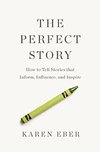
Saved by tatiana and
The Perfect Story: How to Tell Stories that Inform, Influence, and Inspire

Saved by tatiana and
Data visualization: □ Show one thought per slide/page. □ Don’t rely on charts or graphs to tell the story. Pull the idea out of them. Use infographics. □ Use headers to guide the story and insights. Put supporting content in an appendix for reference.
Building the data story: □ What is the context: What is the problem statement you set out to solve? □ What is the conflict: What are you seeing in the data? What is unexpected or surprising? □ What is the outcome: What is the impact? How does the data inform the problem statement? □ What is the takeaway: What is the recommendation? What happens if
... See moreFind a story for the data: □ Tell a story about the data: Tell a story about the smallest piece of data (e.g., person, team, organization). □ Tell a parallel story: What is an idea that aligns with the takeaway you want your audience to know, think, do, or feel differently? What stories can connect to the overall theme and outcome you want for the
... See moreIdentify the smallest amount of data: □ What is the smallest piece of data you can share to inform your problem statement and recommendation? □ Within that data: What problems are faced? What pain points are experienced? What happens if something is or isn’t done?
What is your recommendation about the data? □ What do you learn as you analyze the data? □ What insights does the data provide? □ What is important to know about the data? □ What is surprising or unexpected about the data? □ What do you recommend? □ Are you informing a decision or discussion? □ Define specific questions for the discussion or
... See moreDefine your audience: □ What is their current understanding of the problem statement? □ What is one thing you want them to know, think, feel, or do as a result of the data? □ What are potential obstacles?
What decision is needed? □ One time decision: What is happening? □ Ongoing monitoring of trends and identifying outliers: Why are things happening? □ Forward-looking, predictive, or informing strategy: What might happen in the future? What should we consider next?
What is your opportunity to tell a story with data? □ Create mindset shifts, openness for exploration, and connect to deeper understanding. □ Level set new audience or stakeholders on history, current status, and future focus. □ Key decisions or milestones. □ Inform insights about data (trends, outliers, unexpected results, further exploration). □
... See moreCan you combine two ideas or compare one with the future? □ Does the idea change if told from a different perspective? □ Which of these are you excited to tell?